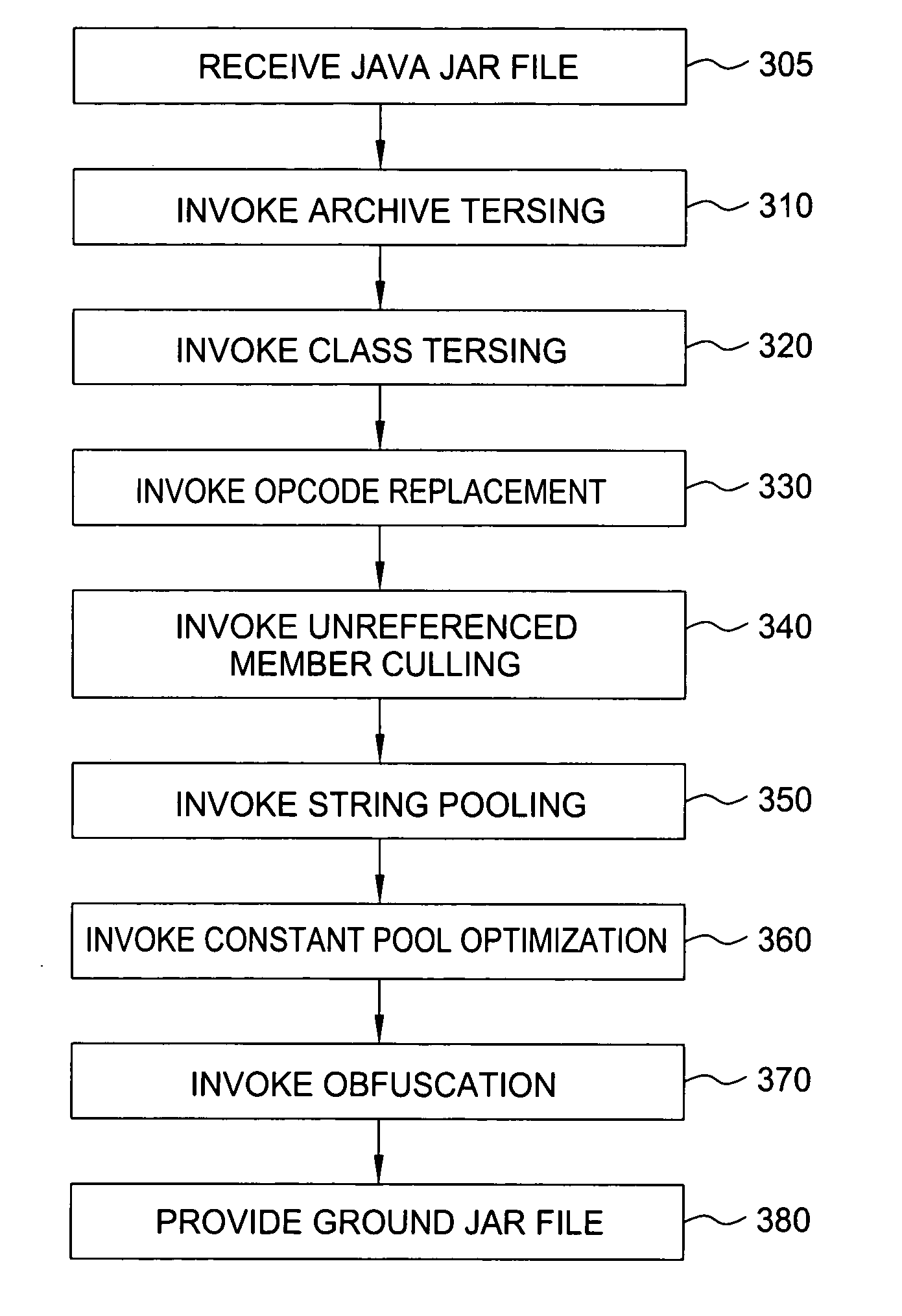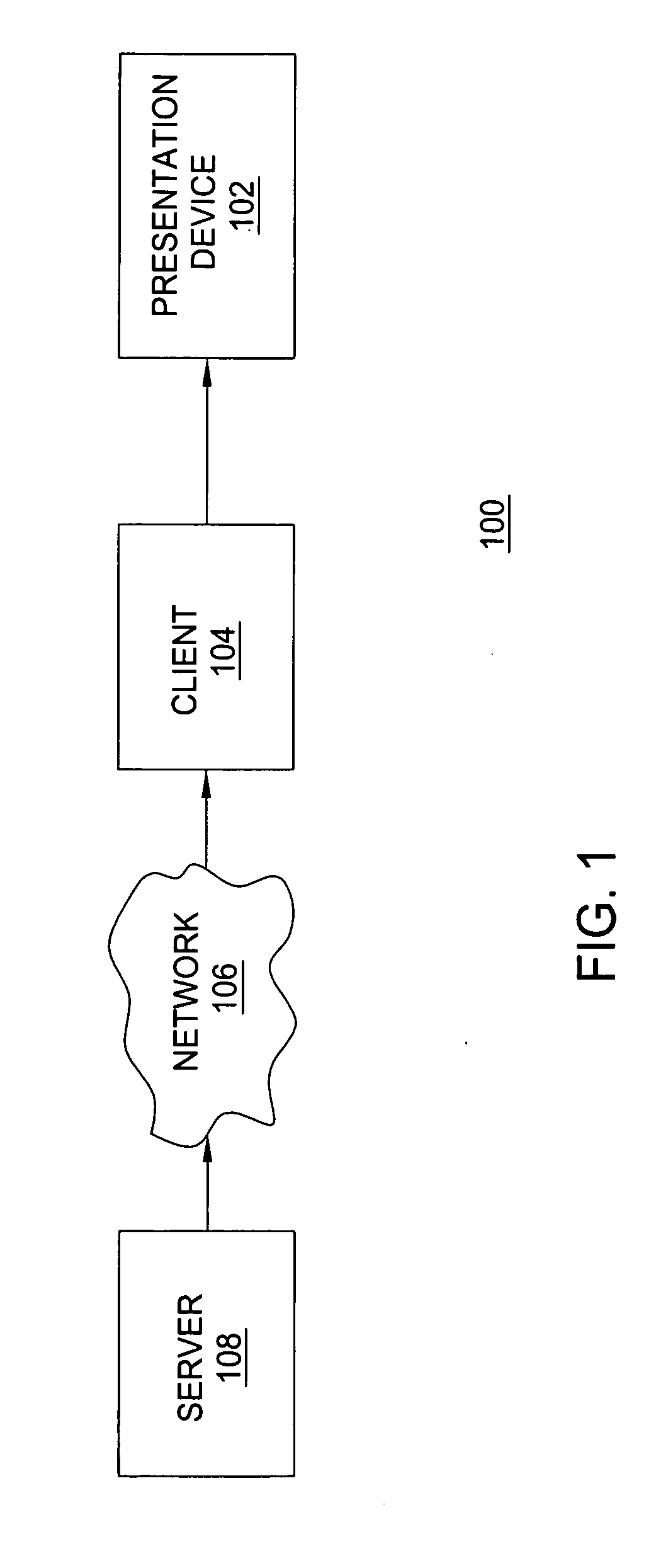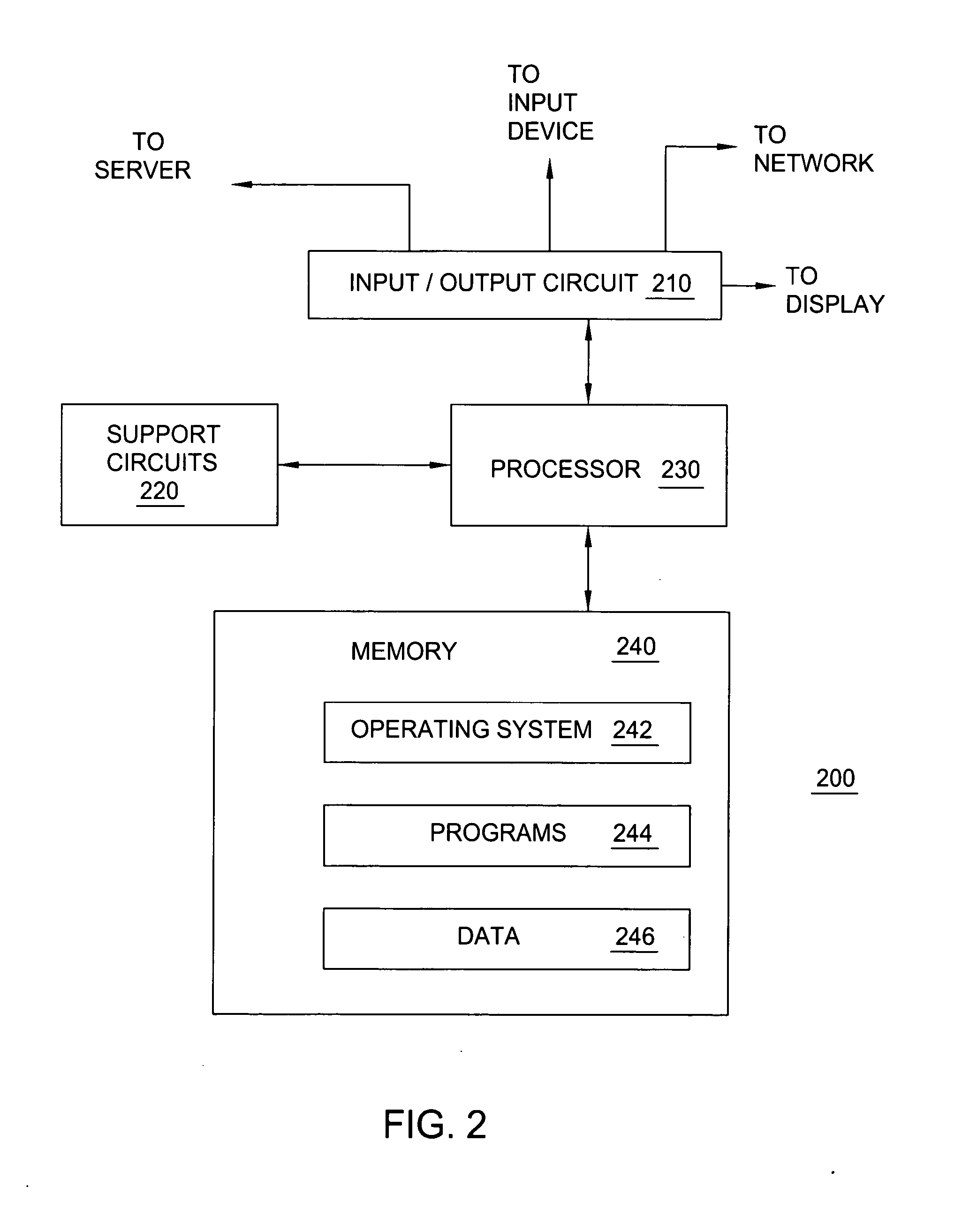Method of transforming java bytecode into a directly interpretable compressed format
- Summary
- Abstract
- Description
- Claims
- Application Information
AI Technical Summary
Problems solved by technology
Method used
Image
Examples
Embodiment Construction
[0013] The subject invention will be described within the context of a process denoted as “Grinding,” in which a number of techniques are employed to produce compressed Java jar files that remain directly interpretable while achieving a significant reduction in size. In addition, all class, method and field bindings remain symbolic, thereby preserving polymorphism. The Grinding process transforms Java jars into a format known as a “ground” jar. Since a ground jar is in a different format than a Java jar, it cannot be interpreted by a standard Java Virtual Machine (VM), but only by a virtual machine that has been “grind enabled.” If desired, however, the grind process can be reversed by an “ungrinding” process, which converts the ground Jar file into a conventional Java jar file containing conventional Java class files which may be interpreted by standard Java VM. The subject invention will be illustrated within the context of a client server environment in which a server is operativ...
PUM
 Login to View More
Login to View More Abstract
Description
Claims
Application Information
 Login to View More
Login to View More - R&D
- Intellectual Property
- Life Sciences
- Materials
- Tech Scout
- Unparalleled Data Quality
- Higher Quality Content
- 60% Fewer Hallucinations
Browse by: Latest US Patents, China's latest patents, Technical Efficacy Thesaurus, Application Domain, Technology Topic, Popular Technical Reports.
© 2025 PatSnap. All rights reserved.Legal|Privacy policy|Modern Slavery Act Transparency Statement|Sitemap|About US| Contact US: help@patsnap.com



